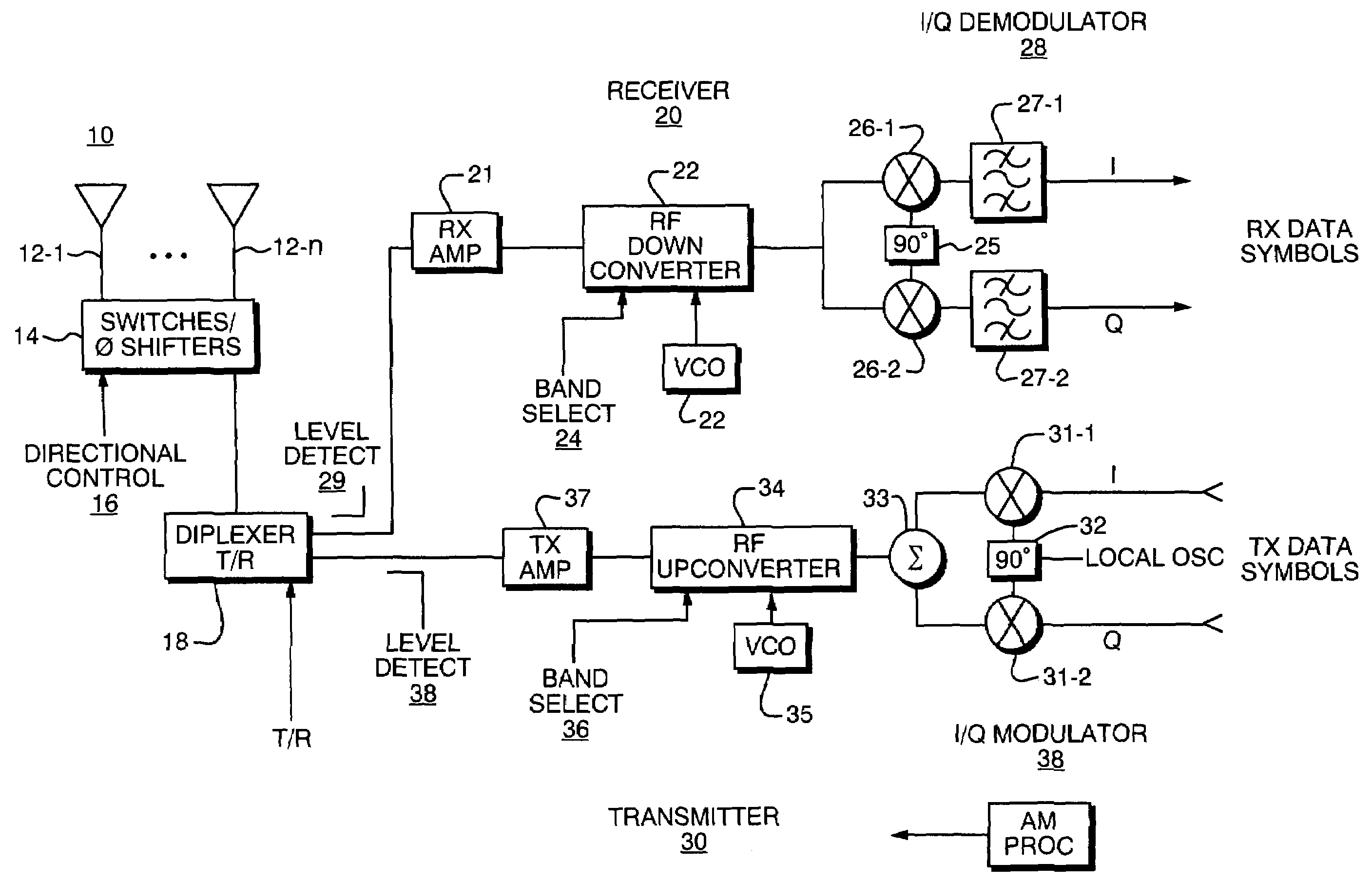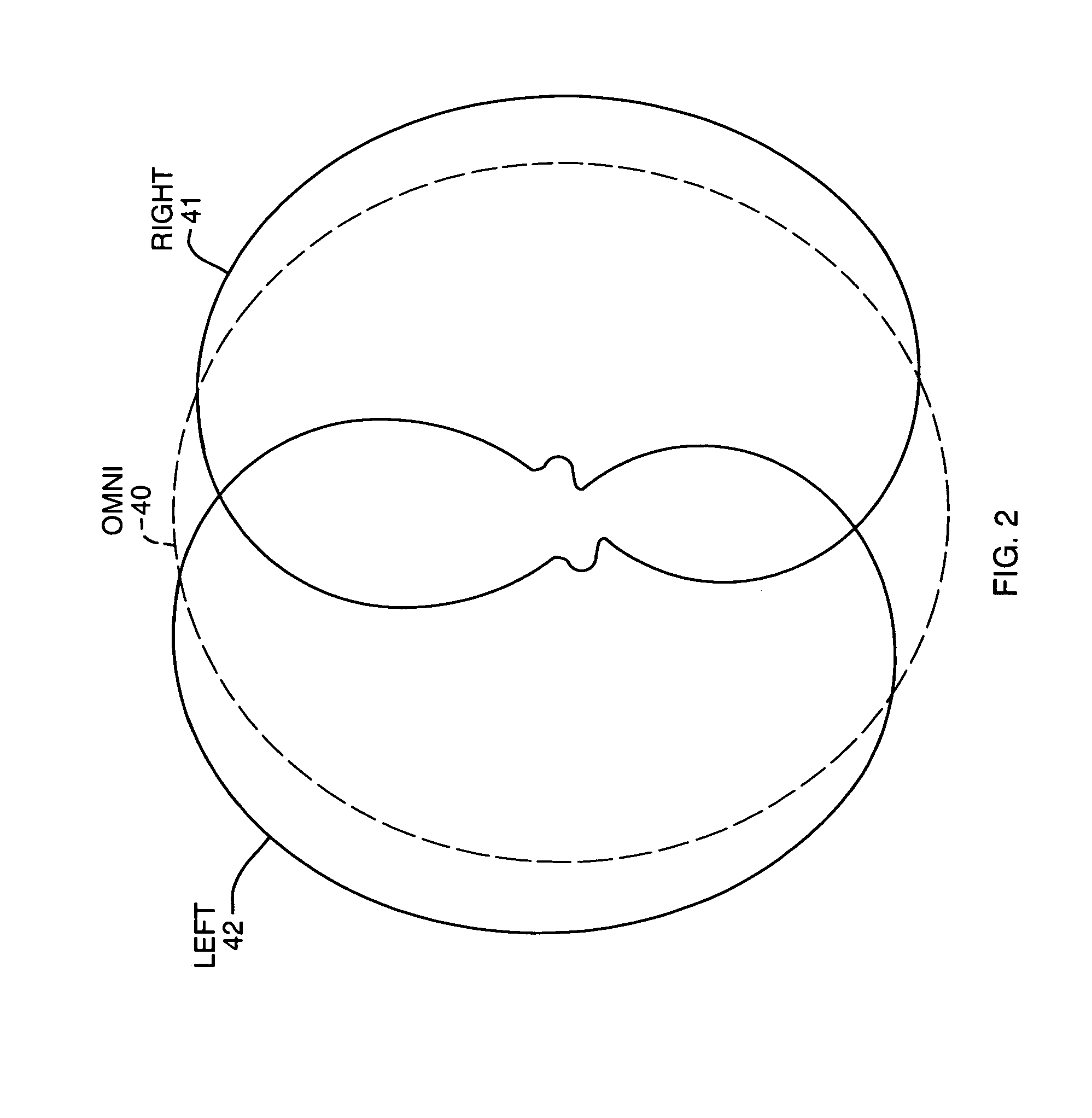Antenna adaptation in a time division duplexing system
a technology of time division and duplexing, applied in the direction of power management, transmission monitoring, site diversity, etc., can solve the problems of increasing noise, interference becomes a problem, and crowding of radio spectrum, so as to reduce the performance of all users, and achieve the effect of reducing noise and nois
- Summary
- Abstract
- Description
- Claims
- Application Information
AI Technical Summary
Benefits of technology
Problems solved by technology
Method used
Image
Examples
Embodiment Construction
[0035]A description of one preferred embodiment of the invention follows. This particular embodiment is for a cellular wireless communication system that is known as Universal Mobile Telephone System (UMTS) Wideband Code Division Multiple Access (W-CDMA) as specified in the Telecommunications Industry Association (TIA) T1.3GPP.25 series of specifications; it should be understood that the principles of the invention may be applied to other types of wireless systems, however.
[0036]Basic Operation
[0037]In any cellular system there is generally a central Base Transceiver Station (BTS) or access point (AP), that communicates to remote units, or User Equipment (UE). Any such system is bi-directional in nature, that is, it must provide the ability to communicate from the BTS to the UE (downlink) and from the UE to the BTS (uplink). The duplexing of the uplink and downlink communication channels may be performed in two primary ways. These are Frequency Division Duplexing (FDD) and Time Divi...
PUM
 Login to View More
Login to View More Abstract
Description
Claims
Application Information
 Login to View More
Login to View More - R&D
- Intellectual Property
- Life Sciences
- Materials
- Tech Scout
- Unparalleled Data Quality
- Higher Quality Content
- 60% Fewer Hallucinations
Browse by: Latest US Patents, China's latest patents, Technical Efficacy Thesaurus, Application Domain, Technology Topic, Popular Technical Reports.
© 2025 PatSnap. All rights reserved.Legal|Privacy policy|Modern Slavery Act Transparency Statement|Sitemap|About US| Contact US: help@patsnap.com



